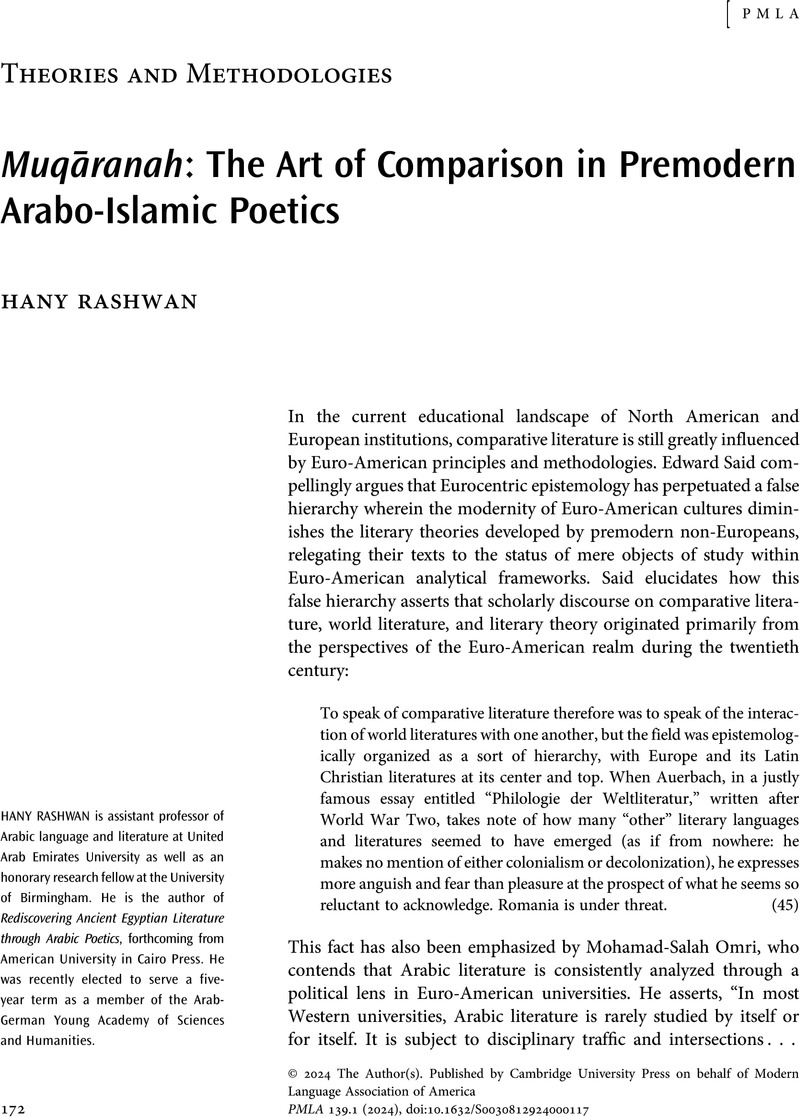Crossref Citations
This article has been cited by the following publications. This list is generated based on data provided by Crossref.
Açıl, Berat
2024.
Portraying multilingualism in Ottoman literary culture: Qasidat al-burdah translations in ornamented manuscripts.
postmedieval,
Vol. 15,
Issue. 3,
p.
819.
Ul-Ihthisam, Ihsan
and
Salim, Simi K.
2024.
Persianate Malabar: Muhammad Shah’s Takiyya and the composition of an Arabi-Malayalam Sufi romance-mathnawī in Southern India.
postmedieval,
Vol. 15,
Issue. 3,
p.
875.



